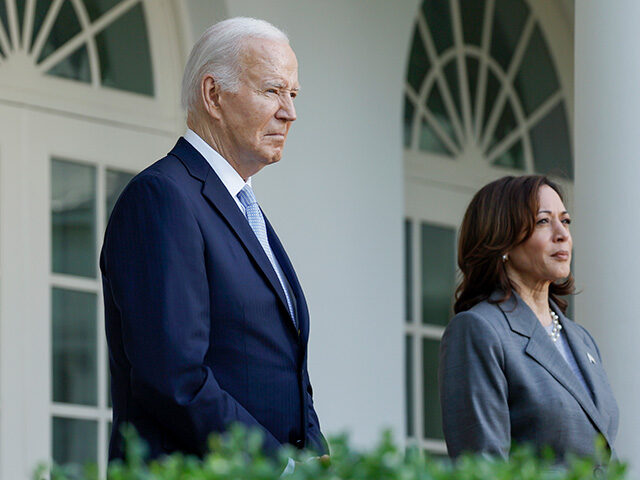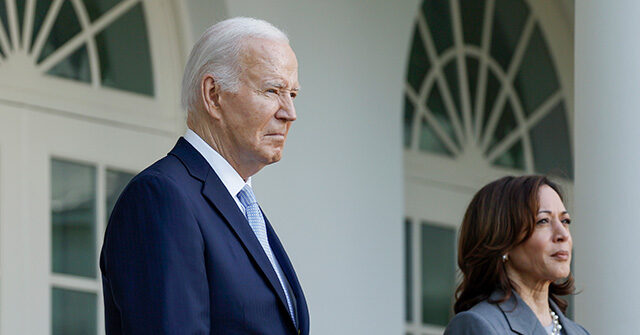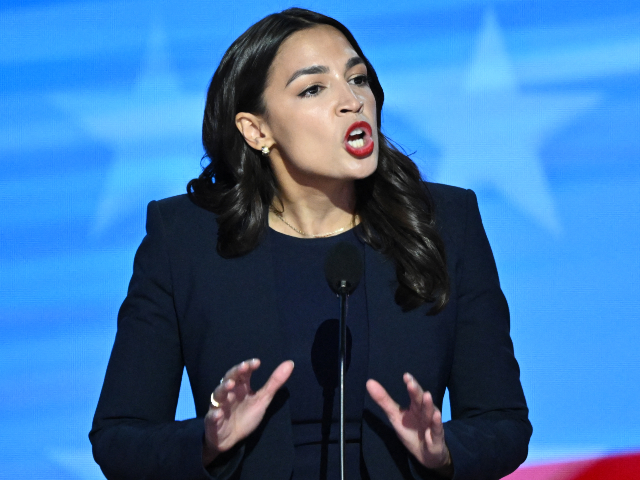
President-elect Donald Trump’s landslide victory put the Democrat party in disarray with no clear leader to pull them from the political abyss.
Democrats planned on President Joe Biden or Vice President Kamala Harris to lead them for at least the next four years, but Trump’s dominant performance appears to have broken them until a new dynamic emerges.
Republican presidential nominee, former U.S. President Donald Trump, takes the stage for his last rally of the election year at Van Andel Arena on November 05, 2024, in Grand Rapids, Michigan. (Chip Somodevilla/Getty)
Many of the current Democrat leaders are too old to represent the next generation of Democrats. Gone are the heydays of Hillary Clinton, Jimmy Carter, Al Gore, and John Kerry. Current Senate Majority Leader Chuck Schumer (D-NY) is 73. Rep. Nancy Pelosi (D-NY) is 84. Minority Leader Hakeem Jeffries (D-NY) is young enough but under his leadership House Democrats were defeated in 2022 and 2024. DNC Chair Jaime Harrison is also younger but he faces the same challenge as Jeffries.
Some Democrats who could emerge as leaders might be found in the governors, who still remain in power but whose resumes were not harmed by Trump’s landslide victory. Those include Govs. Gavin Newsom, Gretchen Whitmer, Josh Shapiro, Wes Moore, and J.B. Pritzker. Rep. Alexandria Ocasio-Cortez also has a chance to gain power, although she is only a representative from a very blue district in New York State.
Rep. Alexandria Ocasio-Cortez (D-NY) speaks on the first day of the Democratic National Convention (DNC) at the United Center in Chicago, Illinois, on August 19, 2024. (MANDEL NGAN/AFP via Getty)
New York Magazine’s Gabriel Debenedetti reported on the Democrat disarray:
All of this would likely have happened to some lesser degree if it were President-elect Harris now considering how to build her Cabinet in order to steer the direction of the new administration. Yet there’s already an underlying consensus across the party that these first squabbles are all just fine as a short-term coping mechanism but that the real work of diagnosis and soul-searching about both its own failures and Trump’s significant inroads into its base will take months, if not years. Some of this will be formal, conducted by the party committees and data firms and by the super-PACs currently getting incoming from furious donors. In the meantime, there will be casual recriminations against Biden and Harris specifically; already, some people close to Biden’s initial operation have wondered aloud how he got away with refusing to run polls to understand his own image before launching a campaign in 2023, while others around Harris have questioned how her advisers meshed with Biden’s loyalists when the campaign turned over and how some of the people who knew her best in California were shut out. Most are convinced that a real deep dive into the party’s more fundamental shortcomings in voters’ eyes will be necessary before they map a coherent and aggressive path forward for themselves. For now, as one top strategist told me this week, they are “licking the wounds” as they contemplate “diagnosing the patient.”
In this way, the mood is more in line with 2004-style desperation and introspection than 2016-style fury. It will likely continue to be, even if the party can somehow agree about whether this result was more a rejection of Biden and the inflation he oversaw or part of a more profound and global anti-incumbent mood. It’s why even if Democrats largely agreed with Elizabeth Warren’s postelection message about the importance of vigilance in Trump’s return, they greeted her particular warning that Republicans were relying on them to “point fingers at each other” with a collective shrug. Now is, in fact, the time for finger-pointing.
But the biggest difference between now and 2016 is the lack of clarity, or even initial ideas, about whom the party can or should turn to for leadership and a vision.
Compounding the Democrat power vacuums is that party leaders appear confused about why Trump won reelection in a landslide and moved 48 states to the right in the process. One takeaway from the election for some on the radical left is to blame Hispanic and black voters as misogynists. That theory was pushed by MSNBC co-host Joe Scarborough and Ocasio-Cortez.
A second theory suggests the loss had nothing to do with Trump and more to do with Democrats being victims of inflation. That theory has been pushed by the White House, former President Barack Obama, and his former staffers.
A third theory, pushed by Pelosi, suggests that Democrats lost because Biden did not step aside soon enough to allow for an open primary. “Had the president gotten out sooner, there may have been other candidates in the race,” she told the New York Times.
Wendell Husebo is a political reporter with Breitbart News and a former RNC War Room Analyst. He is the author of Politics of Slave Morality. Follow Wendell on “X” @WendellHusebø or on Truth Social @WendellHusebo.





